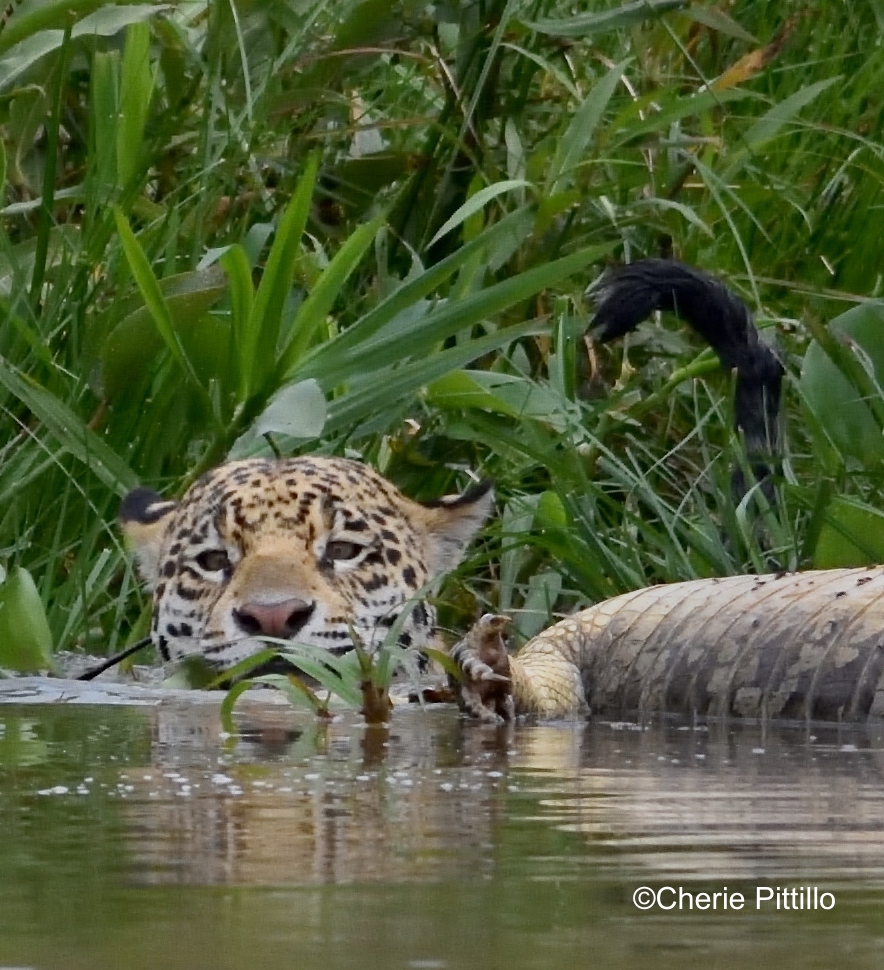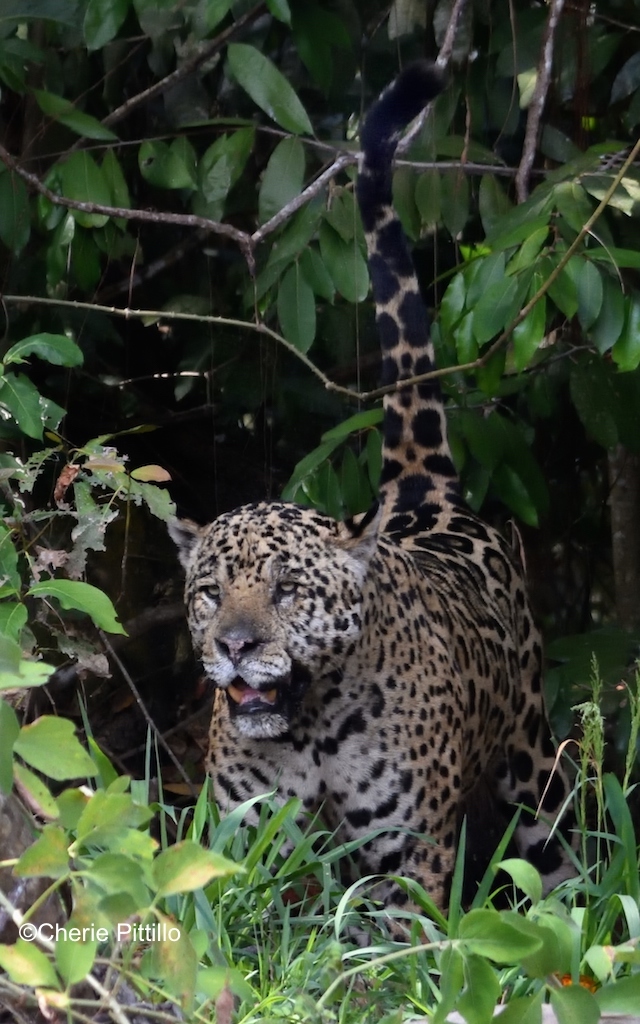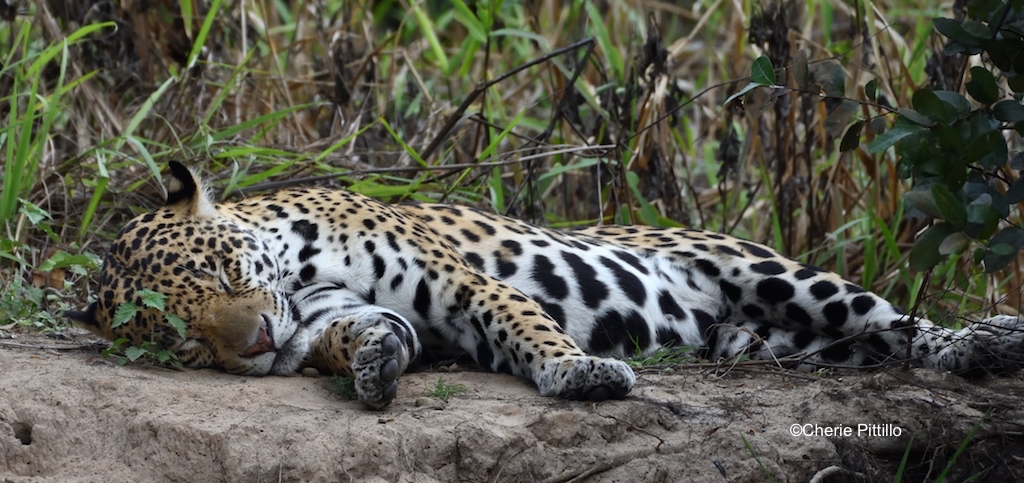World’s leading jaguar conservation organizations and Latin American governments designate November 29 as International Jaguar Day
Sharm El-Sheikh, Egypt, Nov 19 – In an unprecedented global commitment to saving the jaguar, leading international conservation organizations and 14 jaguar range states have joined together to launch the Jaguar 2030 Conservation Roadmap for the Americas, presented at the Conference of Parties (COP) 14 of the Convention on Biological Diversity.
Published at a critical and uncertain time for the future of the Americas’ largest wild cat, the roadmap aims to strengthen the Jaguar Corridor, ranging from Mexico to Argentina, by securing 30 priority jaguar conservation landscapes by the year 2030. This bold, regionally-focused initiative will pave a new path to strengthen international cooperation and awareness for jaguar protection initiatives, including those mitigating human-jaguar conflict and connecting and protecting jaguar habitats, and stimulate sustainable development opportunities, such as eco-tourism, that support the well-being of communities and indigenous peoples coexisting with this species.

Female jaguar holds tail out of water as she approaches dead caiman
At the Convention, the United Nations Development Programme (UNDP), World Wildlife Fund (WWF), Wildlife Conservation Society (WCS), Panthera and government representatives also announced the creation of the first-ever International Jaguar Day. Celebrated annually on November 29, this day will raise awareness about threats facing the jaguar, conservation efforts ensuring its survival and the role of the jaguar as a keystone species whose presence is indicative of a healthy ecosystem – the foundation for a sustainable future for wildlife and people alike.
“The Jaguar Conservation Roadmap for the Americas represents the type of innovative partnership that is essential for achieving the SDGs,” stated Midori Paxton, the Head of Biodiversity and Ecosystems at UNDP. “By bringing together range country governments, the private sector, civil society and international partners, the Roadmap will help protect key jaguar corridors in ways that strengthen sustainable livelihoods for local communities and open up new business opportunities for ecotourism and sustainable agriculture.”

Male jaguars mark their territory with urine, scrape marks, and feces
Panthera Conservation Science Executive Director, Dr. Howard Quigley, stated, “Today represents a true landmark for the future of the jaguar. The Jaguar 2030 Roadmap breathes new life into the world of jaguar conservation, providing a vision and real solutions for the world to protect this culturally iconic and ecologically essential species, while creating tremendous economic opportunities and a sustainable future for all. Particularly as new and pervasive threats emerge for the species, this first-of-its-kind global commitment shines a much-needed conservation spotlight on the often overlooked jaguar.”
Jaguar conservation transcends the intent of safeguarding a single species. Successful jaguar conservation maintains forests, carbon, biodiversity, watersheds, and national and cultural heritage. Accomplishing continental jaguar conservation requires visionary landscape planning and management in development and economic sectors, such as agriculture, forestry and infrastructure, to maintain biodiversity, while achieving Sustainable Development Goals (SDGs), the Strategic Plan for Biodiversity 2011-2020, and the Aichi biodiversity targets. The jaguar’s crucial role in biodiversity conservation will be highlighted by the celebration of International Jaguar Day.

Let sleeping jaguars lie
The release of the roadmap follows the United Nations high-level forum held in March that resulted in the launch of the Jaguar 2030 New York Statement by 14 jaguar range countries and international conservation partners.
The jaguar is the largest apex carnivore in Latin America, ranging across 18 countries. However, 50% of the species’ original range has been lost and jaguar populations are declining due to illegal poaching, human-jaguar conflict and loss and fragmentation of habitat. Given this decline, including the jaguar’s extinction in El Salvador and Uruguay, governments from 14 of 18 jaguar range states have doubled down to save the species, including.
The Yucatan Times Newsroom with information from http://www.undp.org

